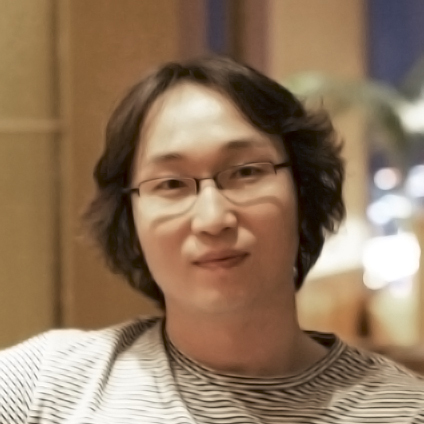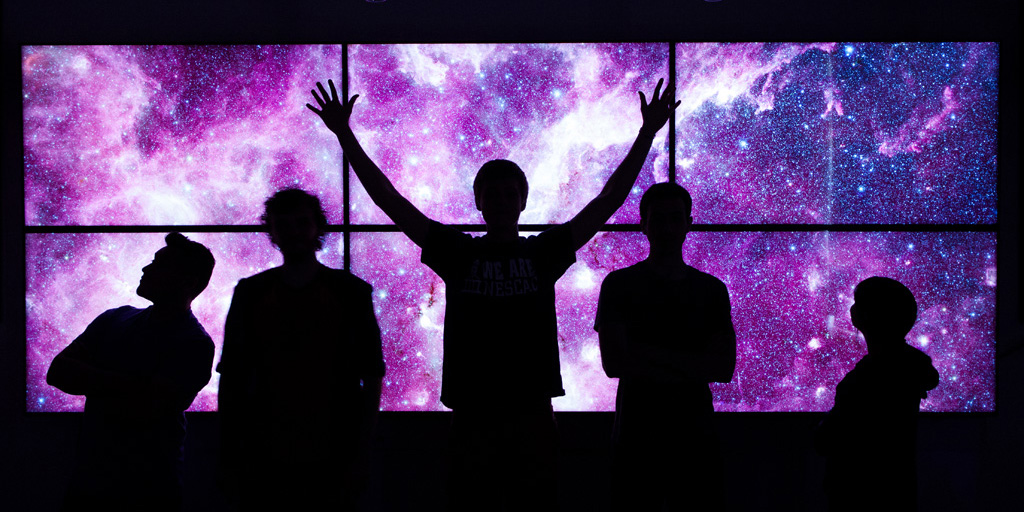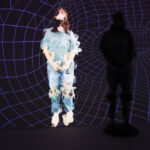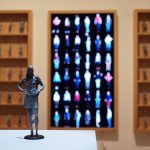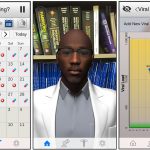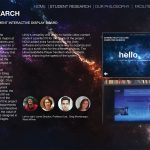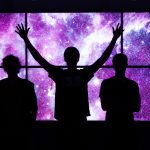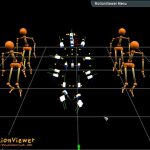Jul 2014
Computer Graphics and Virtual Reality Laboratory (CGVRL)
Computer Science, Connecticut College
1. Introduction
The Visualization Wall is a large display system created to support high-resolution visualization. The wall’s size and functionality allows users to display and interact with complex information within an immersive 2D and 3D visual environment. The Visualization Wall is the first project carried out by the newly established Computer Graphics and Virtual Reality Laboratory (CGVRL) during Summer 2014.
The Visualization Wall is composed of 6 full HD 55″ 3D displays that offer 153” effective screen space in a 2.66 ratio as well as 12 megapixels of resolution. The system uses the sabi.js library to execute applications remotely via a web interface. In addition, 8 motion tracking cameras (NaturalPoint OptiTrack Flex camera) were installed to track a person holding a controller (or joystick) to allow users to navigate 3D space in 6 degrees of freedom.
Participants:
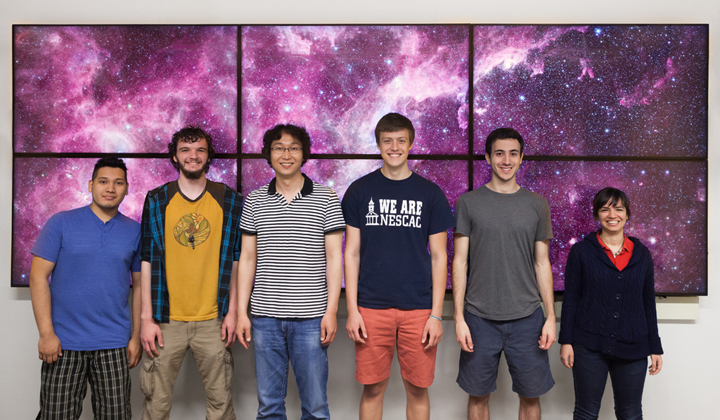
Left to Right: Raymond Coti ’16, Will Stoddard ’17, James Lee (faculty advisor), Jamie Drayton ’17, Matt Rothendler ’15, Danya Alrawi ’16
* image shown on the wall is a part of the GLIMPSE 360 Milky Way image from NASA’s Spitzer Space Telescope.
Making-of Video
Before we began the installation, we mounted a GoPro camera to document the process. Thousands of photos were taken and compiled into a time-lapse video.
Our celebration dinner at a local restaurant for completing the installation of the wall.
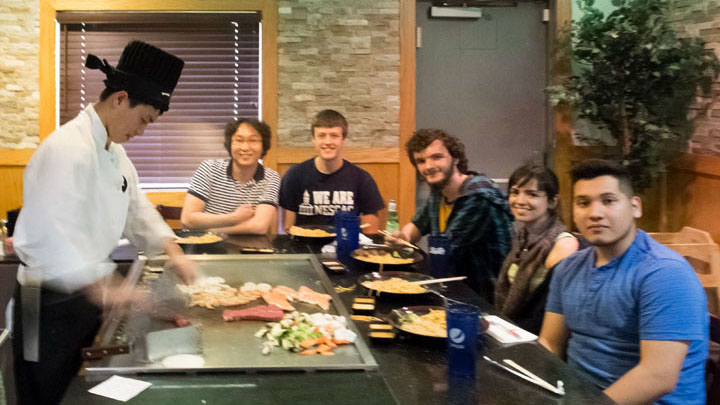
2. Projects
A Virtual Milky Way Galaxy Visualization by Danya Alrawi ’16 and Raymond Coti ’16
This project aims to visualize our galaxy, the Milky Way, in both a scientifically precise and visually appealing way. The application is designed to support text, images, 3D models and videos to help users learn about the galaxy. The current version of the application shows an outer model of the Milky Way as well as general descriptions and images that activate based on the user’s point of view. More information, interaction, and an inner view of the galaxy will be added to the application as we continue working on and developing content.
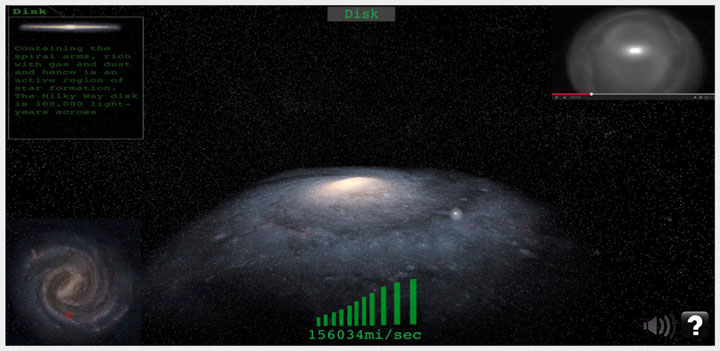
Stars in the Galaxy by James Lee
This project is inspired by Robert Kooima’s Total Perspective Vortex application and Constellations (implemented on the CAVE2 ), which presents over two million stars in a 3D environment. The application uses two astronomical data sets, the Hipparcos and Tycho stellar catalogs. Kooima’s work is ported to Unity 3D environments by making a custom mesh object with a geometry shader to populate a large number of billboards from the vertices of the mesh object (Unity 3D does not support native point sprite object at the moment).
Using a Large Shared Desktop Environment as a Learning Tool by Matt Rothendler ’15
We installed Scalable Adaptive Graphics Environment (SAGE) software for our visualization wall and regularly used it for our research meetings. SAGE offers a seamless large shared desktop for multi-user interaction and provides rich multimedia support. We studied the system and are planning a small scale user-study to verify how this technology can enhance classroom learning. Images shown on the screen below are National Geographic high-resolution maps of the Milky Way and the Universe (source link).
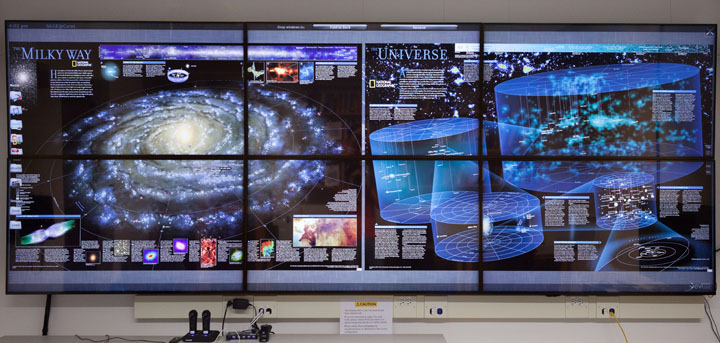
LED Backlit for the Wall by James Lee and Danya Alrawi ’16
While we mostly focused on the installation of the Wall and other visualization projects, we also spent some time on a side project aimed at creating dynamic ambient back-lighting for the Wall. To do this, we used an addressable RGB LED strip (WS2801 type) as the back-light, and an Arduino board to change the colors of the LED strip depending on the user’s preferences. The video below shows a rainbow color looping program from Adafruit WS 2801 Library, as well as our own interactive color sync app that works with audio data (music played is Windows 7 sample music).
3. Acknowledgment
Funding
The Visualization Wall project was established as a part of the Summer Research Opportunities in Science program at the Connecticut College. We would like to thank the Keck funding, Sherman Fairchild funding, and CELS internship program, for funding and supporting the students’ research. We would also like to thank the Judith Tindal Opatrny ’72 Junior Faculty Fellows Fund, and the Susan Eckert Lynch ’62 Faculty Research Fund, both of which greatly contributed to our faculty-student research program. Finally, we would like to acknowledge the Department of Computer Science and the Office of the Dean of Faculty for allowing us to accomplish this special project.
Software and System Design
We used the SAGE software developed by Electronic Visualization Laboratory (EVL) at the University of Illinois at Chicago to implement a shared desktop environment. The wall system design is inspired by EVL’s Cyber-Commons and CAVE2.
